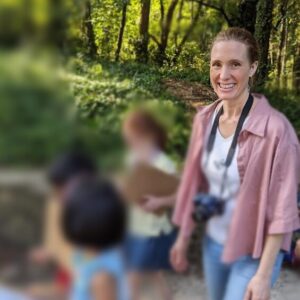
I looked at the giant black bags of trash after every STEM challenge, and thought to myself, “There is something wrong with the way we are doing STEM.”
This was the beginning of a journey.
A few years prior, I had left aside teaching high school science to start teaching at a small K-8 elementary school and to be closer to my kids. To my surprise, this step opened the door to innovation.
There, I led a STEM program across the whole school. Although a small school has many limitations, it is also a place where, under the right conditions, a teacher can innovate. This is what I decided to do, building on the work of prior teachers, and with the participation and help of many of my colleagues.
Yet, as I built the STEM program, I was not convinced by everything that I was seeing in STEM education. There was a lot of talk in STEM about solving environmental problems, but the content was fragmented. STEM programs also narrowed in on technical skills sets that tended to lose sight of the bigger picture. Also, the way it was taught in the classroom involved kits and sets full of single-use and disposable materials. Students never evaluated the material footprint of their designs.
However, STEM also had key strengths. It is a powerful tool for change. For example, students are not given formulas or recipes to follow; rather, they have to come up with the process, choose the materials, and test their results. They get to experience failure and redesign. Likewise, they have to navigate the messy experience of working with others. These experiences are transformative for young people, and give them an incredible sense of agency.
I set out to do a different kind of STEM. Along the way, I discovered the depth and complexity of the problems. Everything is connected in a big system. The soil degradation, biodiversity loss, invasive species, water scarcity, contamination, and resource scarcity, all connect with the way things are built and designed. Most things follow a TAKE-MAKE-WASTE model of design, production, and consumption.
If the model is changed to a circular economy design, STEM education changes. Students begin to ask how their design fits into the cycles of materials. They begin to consider their design’s footprint. They begin to give value even the most insignificant materials, rather than treat everything as waste. There is no waste in circular design, at least this is the ambition of the designer.
Because everything is connected in large systems, tomorrow’s problem solvers will need to think in “systems” and make connections. They will need to be able to communicate, persuade, and work together. My hope is that my science and STEM classes are also “life” classes—opening students minds, awakening their curiosity, allowing them to dream, and introducing them to the real world they will have to navigate. My students are encouraged to think about the human dimensions of STEM-related problems and solutions, about tradeoffs and unintended consequences, about right and wrong, about justice and injustice.
My effort is to bring together a vision of STEM that is broad and integrated, deep and human–CIRCULAR STEM.”
I want to thank and acknowledge the help and support of my family–my husband, my kids, my sisters, and my colleagues who accompany me on this journey to make a difference.
